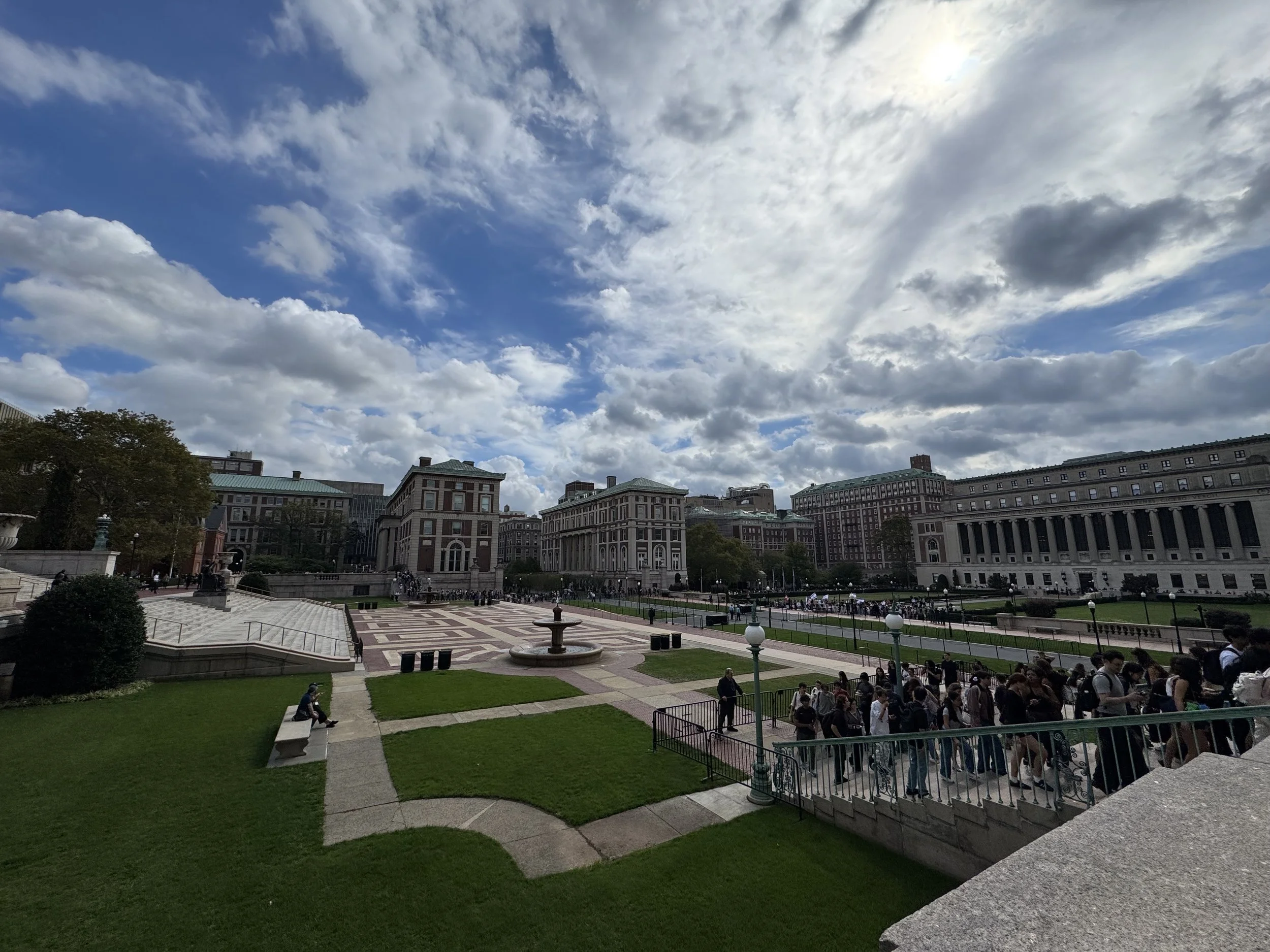A Vigil and “Not A Vigil”: Two Ceremonies Mark the Two-Year Anniversary of October 7
(Photo/Emma Cregan)
TW: mentions of sexual assault and violence
By Emma Cregan
On Tuesday, Oct. 7, students and faculty found their habitual routes across campus blocked by barriers surrounding Low and Butler Libraries and guarded by Columbia public safety and third-party security.
Onlookers saw the lawn in front of Butler Library covered in white plastic chairs, images of hostages, and Israeli flags flying. Music played near the group of people gathered in front of the display.
Outside the campus gates at 116th and Broadway, a different group of people stood wearing keffiyehs and cardboard signs emblazoned with calls for a free Palestine.
Demonstrators were guided to the area in front of Miller Theatre by organizers wearing cuffs of pink tape around their arms. Organizers passed out more signs, pamphlets, and other materials providing information about the Israel-Palestine conflict. As demonstrators stood penned in by metal barricades, NYPD patrolled around the periphery, keeping pedestrians moving along the sidewalk.
Oct. 7 marked the two-year anniversary of the Hamas attacks on Israel, and the beginning of the ongoing war in Gaza. The Columbia Palestine Solidarity Coalition (CPSC) and Students Supporting Israel (SSI) both planned events to mourn the lives lost during the conflict. CPSC, in collaboration with Student Union, Sunrise, JVP, and SDS, originally planned a vigil to be held on the steps of Low Library, but the University denied permission, citing a violation of its Vigil Policy. CPSC moved the event off campus, renaming it “Not a Vigil.”
Shouting over a persistent soundtrack of traffic, attendees and organizers at the CPSC “Not a Vigil” detailed the ways Columbia University had limited and prevented pro-Palestinian demonstrations over the past two years. They lamented the lack of dignity and humanity in the University’s denying them permission to mourn on campus grounds. With red cardboard poppies proclaiming “we will honor all our martyrs” hoisted in the air, the crowd of attendees shouted in protest each time a speaker listed a way the University had suppressed pro-Palestinian activities on campus.
A few passersby heckled the vigil, one pedestrian shouting “Yay October 7th! Rape more Jews!” and a man wearing a MAGA hat mocked the demonstration’s use of call and response.
Highlighting the University’s history of student protests–from the Vietnam War to Apartheid–speakers commented on the hypocrisy of the school’s limitations on CPSC’s right to demonstrate on campus. CPSC claimed the SSI event received noticeably different treatment from the University. A chorus of chants began demanding for Columbia to divest and cease funding Israeli military operations.
Back on campus, SSI, in collaboration with Let’s Do Something and DiploAct, placed 1,200 chairs and posters of Israeli hostages on the West lawn to represent 1,200 deaths from the Oct. 7 attack. At the ceremony, the names of 48 hostages were read aloud and live music was performed. Amit Aharoni, a senior at Columbia’s School of General Studies, explained that the ceremony was meant to be a “quiet symbolic vigil just to talk about the hostages,” and that “we weren’t trying to be loud.”
As crowds dispersed, and gates re-opened, campus security guards remained posted across the center of Columbia’s campus. Students and faculty could once again move freely between Low and Butler Libraries, and the usual hum of chatting students returned to the lawns. But the continued presence of barriers and guards around campus made it clear Columbia’s security was on high alert.
Although the CSPC vigil was pushed off the grounds of campus, chants of “free Palestine” could be heard all the way on the east side of campus.
It’s common practice for the University to put up barriers for events on campus, but the barriers on Oct. 7 were a stark reminder of previous crack downs on student protests during the early days of the Gaza War.


